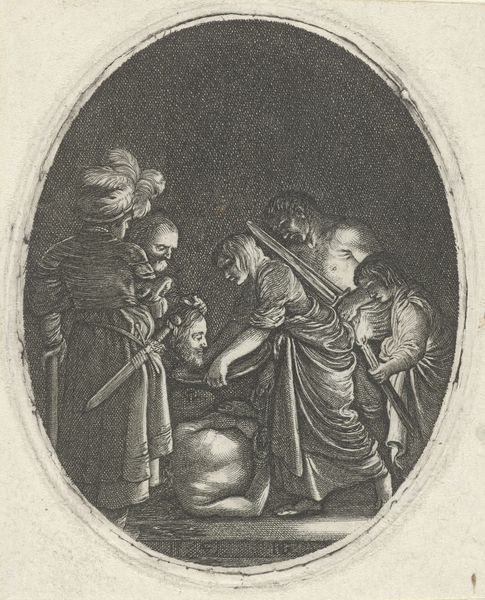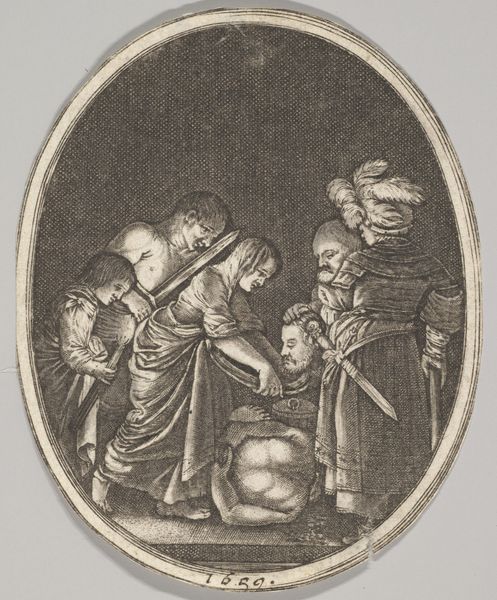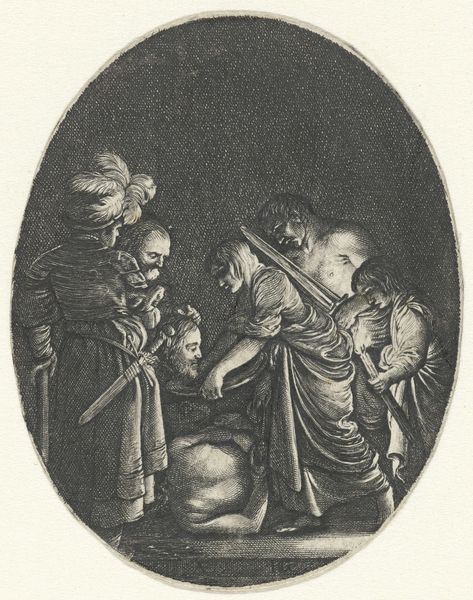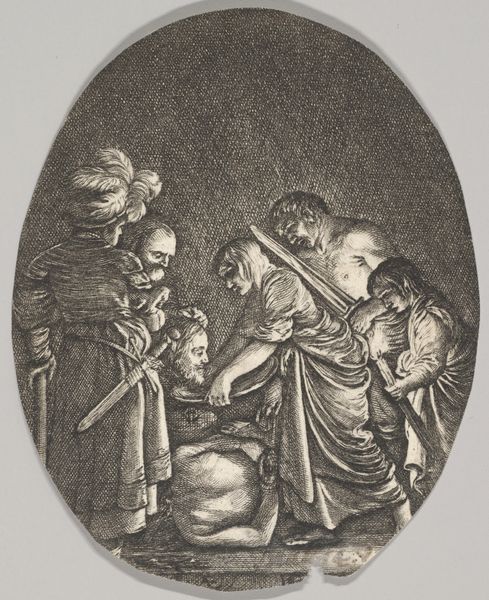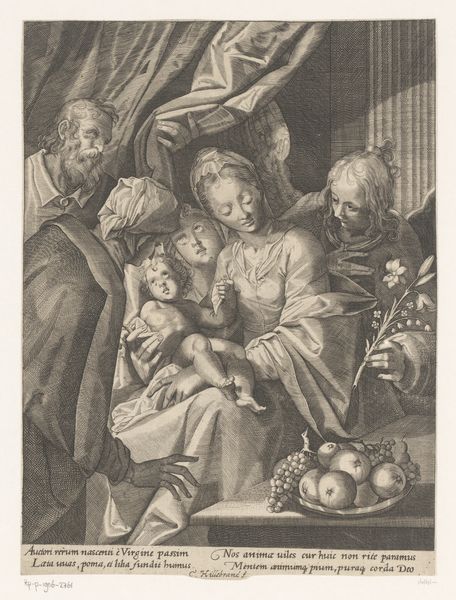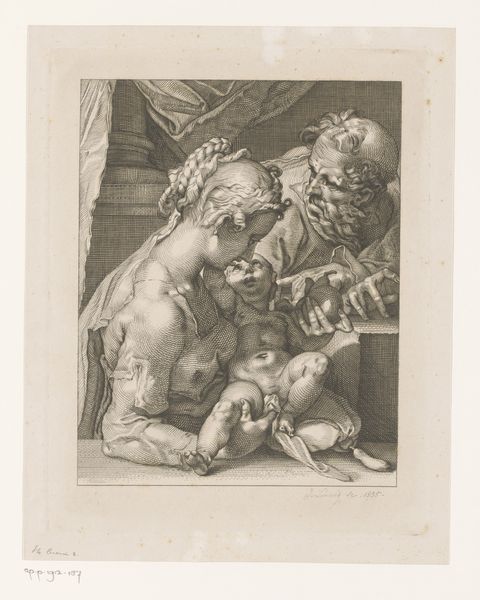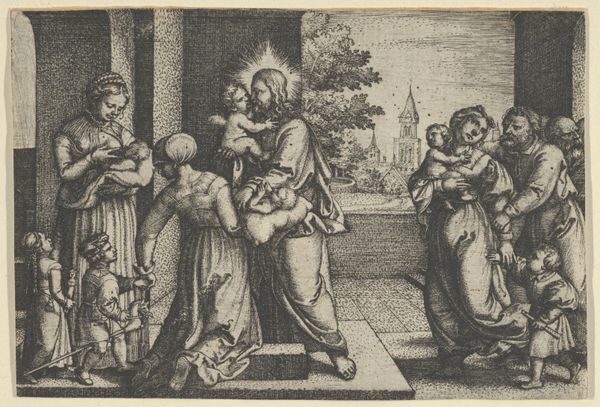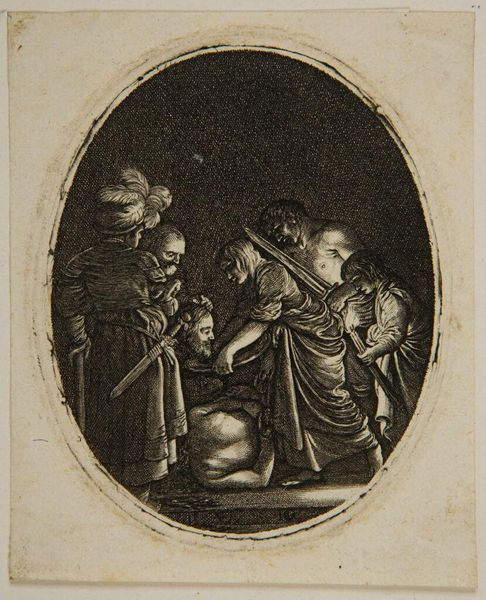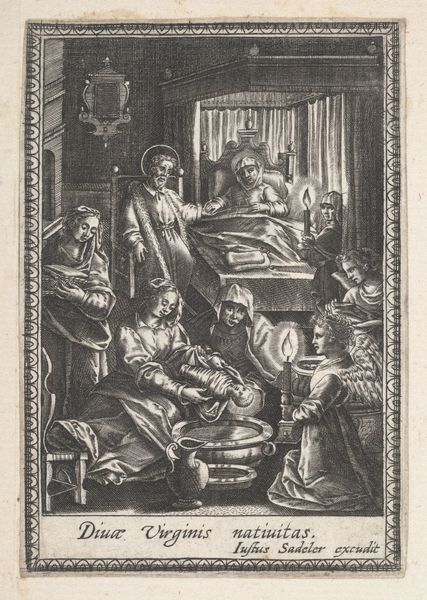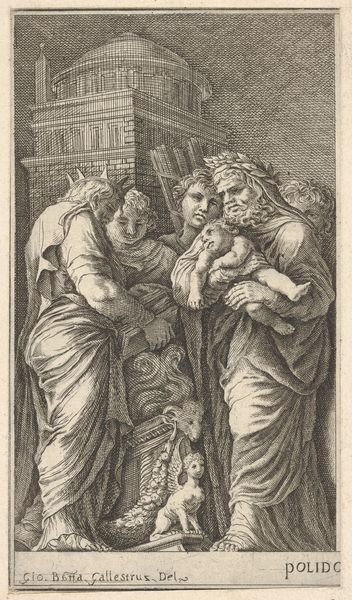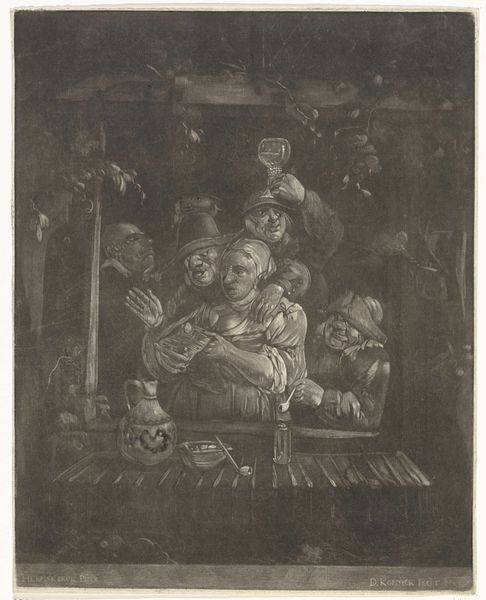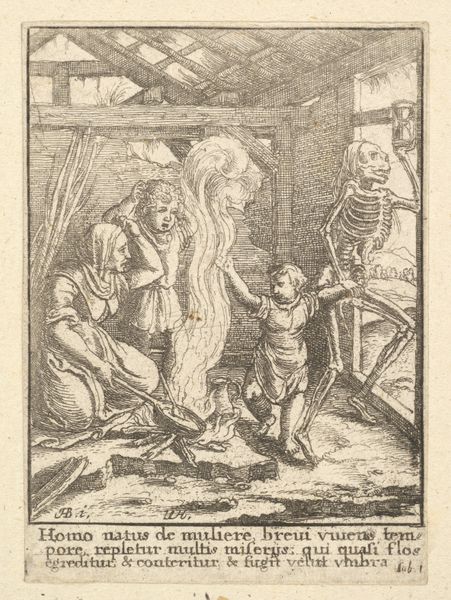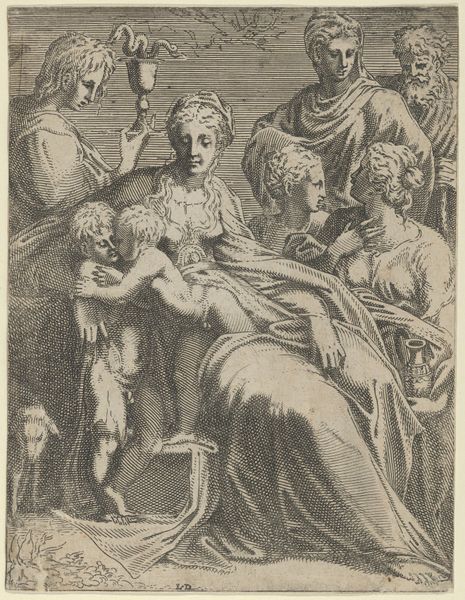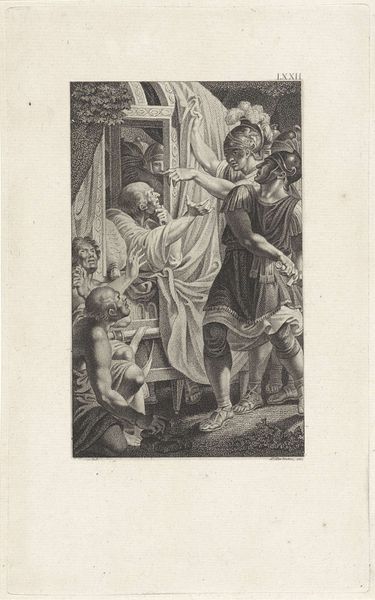
Salome receiving the head of John the Baptist, surrounded by three men and a child bearing a torch, the Baptist's body lies on the ground, an oval composition 1625 - 1668
0:00
0:00
drawing, print, engraving
#
drawing
#
narrative-art
#
baroque
# print
#
figuration
#
child
#
men
#
sketchbook drawing
#
history-painting
#
engraving
#
sword
Dimensions: Sheet: 2 5/8 x 2 1/16 in. (6.7 x 5.3 cm)
Copyright: Public Domain
Curator: Brrrr, this sends chills down my spine. The darkness is oppressive, and the sharp lines accentuate the violence. Editor: Indeed. We are looking at “Salome receiving the head of John the Baptist,” an engraving by Balthazar Moncornet, likely created sometime between 1625 and 1668. It’s currently held in the collection of the Metropolitan Museum of Art. Curator: The composition is striking—a tight oval framing the gruesome scene. The artist has really played with light and shadow, hasn’t he? The torchlight seems to emphasize the horror. Editor: Absolutely. Consider the socio-political context of the time. Religious dramas like this one were not just artistic expressions; they were moral lessons, shaped by the dominant ideologies. Moncornet, like many artists of the Baroque period, would have been acutely aware of the power of imagery to convey both piety and warning. Curator: Note the strategic placement of figures, almost a semiotic game unfolding before us. Salome, in the center, is framed by the executioner and other characters. The positioning screams power and authority, the lines of sight converge on John’s head, thus serving as the narrative and pictorial crux. Editor: Precisely. The print circulated within a complex market, often disseminated to different audiences. Prints such as this one catered to the elites, as well as served a purpose of instructing wider audiences with visual storytelling. The image’s purpose within early modern political and religious discourse cannot be denied. Curator: And think about the implications of reproducing such a violent scene. The repetitive act of engraving would allow further inspection and also a greater engagement with violence itself, thus enabling it to permeate the observer’s conscience more intensely. Editor: In the grand scope of this historical piece and its engraving format, we can see an era grappling with religious interpretation, state power, and the potency of symbols in communicating moral stances. Curator: An emotionally fraught, aesthetically accomplished composition to be certain. Editor: Indeed. A visual echo of its volatile era.
Comments
No comments
Be the first to comment and join the conversation on the ultimate creative platform.
